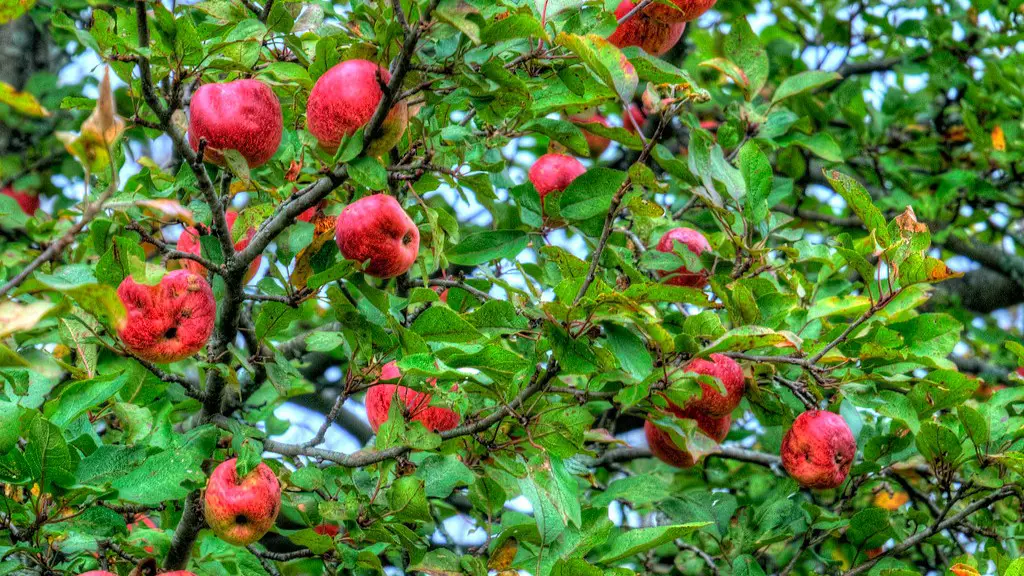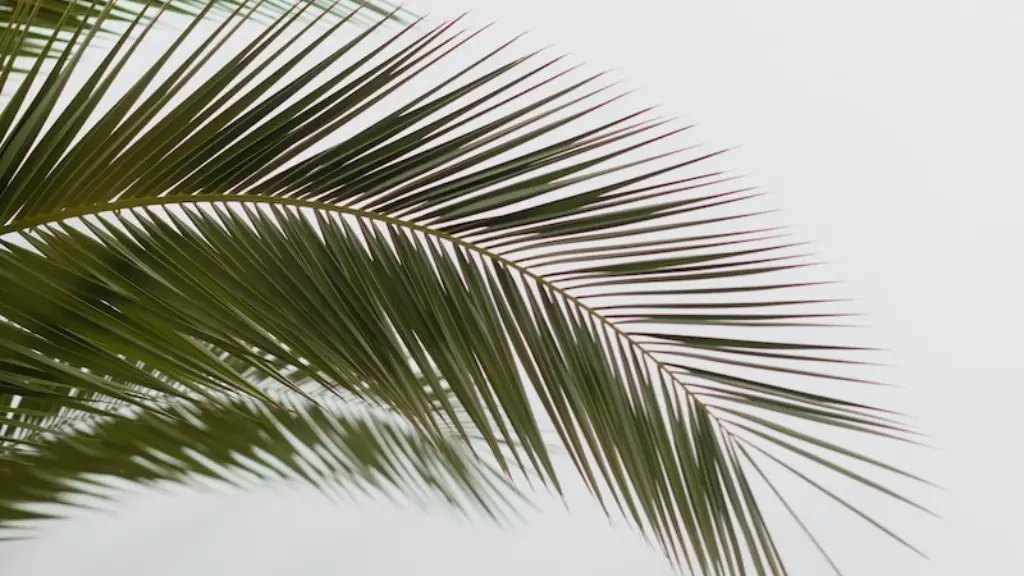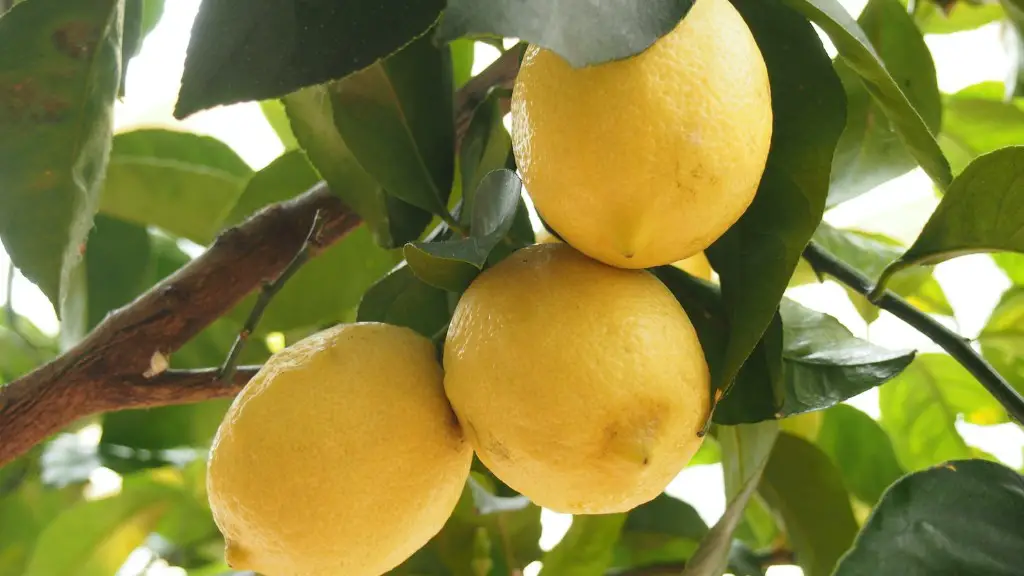Apple trees can be grafted in early spring before the buds break, or in late summer/early autumn when the sap is beginning to flow less vigorously. The most important thing is that the grafting wood (scion wood) is taken from a young, healthy apple tree that is ideally no more than two years old.
There are a few different ways that you can graft an apple tree, but the most common method is called “T-budding”. First, you will need to choose a rootstock that is disease-resistant and that is compatible with the type of apple tree that you want to graft. Next, you will need to find a shoot on the rootstock that is about the same size as the shoot on the apple tree that you want to graft.
Carefully make a T-shaped cut on both the rootstock and the apple tree shoot, being careful not to damage the tissues beneath the bark. Next, you will need to insert the shoot from the apple tree into the cut on the rootstock. Finally, you will need to bind the two cuts together with grafting tape or something similar, and then wait for the graft to take.
What time of year do you graft apple trees?
Spring is the best time to graft because the buds on the understock trees are just beginning to open. This gives the graft a chance to take hold and grow before the blossoms appear. Budding is a method of grafting in which the scion (upper portion of the graft) is a single bud rather than a piece of stem or twig. This makes it easier for the graft to take hold and results in a stronger, healthier plant.
Bark grafting is one of the simplest ways to graft an apple tree. You don’t need to cut any part in this method. Instead, simply peel away some of the bark from the rootstock and insert the scion between the bark and the inner wood. Then, lash the rootstock and scion together to secure them.
Can you graft an apple tree to any tree
Different species in the same genus are often compatible for grafting because they share similar characteristics. This is also true for rootstocks and scions that belong to the same botanical species. Anything that is an apple, for example, can be grafted to another apple. The success of the grafting will depend on many factors, including the health of the plant material, the time of year, and the conditions under which the grafting is done.
If you are looking to graft your trees, the best time to do so is in late winter or early spring. This is when trees are actively growing, and the grafts will take much quicker. Avoid grafting in fall or early winter, as the trees are dormant and new growth will be slow.
Do you bury the graft on fruit trees?
When planting a tree, be sure to dig the hole deep enough so that the graft union (the point where the two different varieties of tree are joined together) is 2 to 3 inches above the ground. If the graft union is below the ground level, the scion (the upper variety of tree) will form roots and the tree will become a standard-sized tree.
Budding is a grafting method in which a bud from one plant is grafted onto the rootstock of another plant. This method is becoming increasingly popular in fruit tree production due to the fact that it is much less time-consuming and more economical than other methods. Additionally, budding allows for more plants to be produced by using individual buds from different rootstocks.
Which month is best for grafting?
Grafting is a technique that is used to join two pieces of plant material together so that they will grow as one. The best time for grafting is in the spring just as growth starts. This is because the plant is healthy and the weather is not too hot or cold. If necessary, grafting can start several weeks before growth is expected and can continue a few weeks after growth has started, if you have dormant scion wood in storage and if weather is not exceptionally warm.
M9 rootstock is the best choice for a small apple tree that is only 25m tall. However, if you want an espalier or cordon, then M26 is the better option. If you just want a stepover or tree in a pot, then M27 is your best bet. If you need a large tree, go for MM111 for a tree up to 45m tall, or M25 for a large standard tree that is approximately 4-5m tall.
How long does it take for a grafted apple tree to bear fruit
Different apple varieties can be grafted onto either dwarf or standard-height rootstocks. Trees with dwarf rootstocks may bear fruit in as little as 1-2 years after purchase, while those with standard-height rootstocks may take 3 to 5 years before they produce apples. In both cases, the trees will likely have been grown for several years in a nursery before they are sold.
Graft failure is a serious complication that can occur after surgery. There are many factors that can contribute to graft failure, including errors in graft selection, tunnel placement, tensioning, or fixation methods. Additionally, improper postoperative rehabilitation may also lead to graft failure. However, current protocols seem to minimize its occurrence. It is important to follow all instructions given by your surgeon to help reduce the risk of graft failure.
Can you graft an apple tree branch into a maple tree?
You can only graft the same kinds of plants together. Any variety of apple on an apple trunk, cherry on cherry, maple on maple, etc.
Regardless of the type of graft, there are three major steps that must be followed in order to successfully graft a plant. The first step is to properly prepare the stock and scion for grafting. This involves making sure that the cut surfaces of the stock and scion are clean and free of any debris, and that the cambium layers of each are lined up properly. The second step is to insert the scion into the stock, making sure that the cambium layers are lined up. The last step is to secure the graft by wrapping it with grafting tape or another suitable type of tape, and sealing it with grafting wax or another type of sealant.
Can you cut a branch off an apple tree and plant it
This is a note on apple tree cuttings. Cuttings are typically taken in January, refrigerated, and then grafted onto rootstock in the early spring. However, it is possible to get an apple tree to root from a hardwood cutting, but the success rate will be low and it may take up to six months for the cutting to root.
The mechanically prepared scion and stock had the highest sprouting and success percentage. This operation was also the most efficient which took 954 minutes only to graft hundred plants of apple.
How long do you leave grafting tape on?
After three to four weeks of new growth, the plastic bag and grafting tape are removed. The new plant is then transplanted to a more permanent location.
While there is no definitive answer on the best way to bury a plant’s union, the majority of growers favor leaving it just above the soil line. This is because the union is a fairly delicate area and, in some instances, improper grafts can occur if it is buried too deep.
Conclusion
There are a few different ways that you can graft an apple tree. One way is to take a bud from the desired apple tree and insert it into a cut on the rootstock of the plant that you want to graft the apple tree onto. Another way is to take a portion of the trunk of the desired apple tree and insert it into a cut on the rootstock.
By grafting an apple tree, you can ensure a bountiful harvest of fresh apples for years to come. This simple horticultural technique involves joining a desired apple variety onto the rootstock of a hardy apple tree. When done correctly, grafting is a relatively easy process that virtually any gardener can successfully complete. With a little patience and some basic know-how, you can transform a ordinary apple tree into a thing of beauty that will provide you and your family with years of enjoyment.




